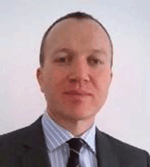Lean offshore platform design
Drew Sage A B , Michael Bieganski A and Andrew Grant AA Aker Solutions, Level 24, 197 St. Georges Terrace, Perth, WA 6000, Australia.
B Corresponding author. Email: Drew.Sage@akersolutions.com
The APPEA Journal 57(2) 635-638 https://doi.org/10.1071/AJ16077
Accepted: 28 February 2017 Published: 29 May 2017
Abstract
Current industry practices of prescriptive design and duplication of previous work on offshore oil and gas facilities have often caused relatively simple design requirements to be executed as large, maintenance-heavy, expensive platforms. The question of whether equipment is technically justified is rarely asked, and the potential benefits of minimised systems are rarely realised.
By adopting lean design thinking, where all equipment must be technically justified as essential to operation before being included on the platform, the benefits are twofold. First, personal safety is improved because less equipment is required to be maintained offshore, meaning fewer offshore man-hours. Second, significant cost savings can be achieved because less offshore equipment means smaller platforms.
This paper outlines the design, operating, manning and maintenance philosophies that form the basis for lean design thinking, and the effect this thinking has on both offshore man-hours and facility costs. Two case studies have been undertaken to evaluate the quantifiable differences between conventional platform design and lean platform design. Aker Solutions’ Lean Semi has been compared with a conventional semisubmersible platform to show that substructure weight savings of up to 30% are achievable; in addition, Aker Solutions’ Hybrid Compression Facility has been compared with a conventional compression platform to show that topsides weight savings of more than 50% are achievable.
Keywords: compression, cost reduction, design methodology, minimum facilities, technology, unmanned.

Drew Sage is Senior Manager – Projects and Studies at Aker Solutions within the Front End Delivery Centre. Drew has a Bachelor of Chemical Engineering from Curtin University of Technology (1996) and 20 years of engineering and management experience in conceptual, front-end and detailed design on both greenfield and brownfield projects. Areas of capability include facilities and process engineering, offshore fixed and floating platform topsides design, subsea field development, system engineering and onshore gas facility design. Key experiences include leading innovative teams, business development, leading corporate strategies, commercial and contractual negotiations, board-level roles and company start-ups. |

Michael Bieganski is a Senior Engineer at Aker Solutions within the Front End Delivery Centre. Michael has a Bachelor of Civil and Construction Engineering with First Class Honours from Curtin University of Technology (2004) and is a Chartered Engineer with Engineers Australia. Michael is a structural engineer with 11 years experience in concept, front-end engineering design and detailed design engineering on both greenfields and brownfields projects. Michael is experienced in gravity base substructures, subsea structures, topsides structures and floating offshore facility design. |

Andrew Grant is a Graduate Engineer at Aker Solutions within the Front End Delivery Centre. Andrew has a Bachelor of Chemical and Process Engineering with First Class Honours and a Bachelor of Chemistry from the University of Western Australia (2015). Andrew has 2 years of engineering experience in conceptual design of both greenfield and brownfield projects. Areas of capability include facilities and process engineering, offshore fixed and floating platform topsides design, flow assurance, produced water treatment and adsorption material manufacturing and modelling. Andrew is a Graduate Member of Engineers Australia (EA). |
References
Kreafle, K.G. (2011). Lean product development. Interdisciplinary Information Sciences 17, 11–13.| Lean product development.Crossref | GoogleScholarGoogle Scholar |


